Related Research Articles
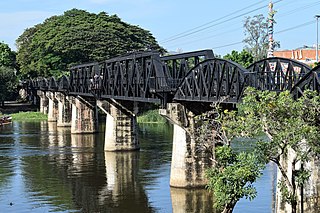
The Burma Railway, also known as the Death Railway, the Siam–Burma Railway, the Thai–Burma Railway and similar names, is a 415 km (258 mi) railway between Ban Pong, Thailand and Thanbyuzayat, Burma, built by prisoners of war of the Japanese from 1940–1944 to supply troops and weapons in the Burma campaign of World War II. This railway completed the rail link between Bangkok, Thailand and Rangoon, Burma. The name used by the Japanese Government is Tai–Men Rensetsu Tetsudō (泰緬連接鉄道), which means Thailand-Burma-Link-Railway.
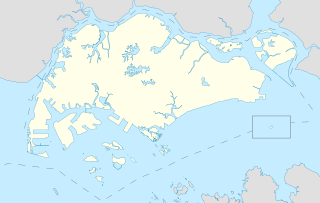
Changi Prison Complex, often known simply as Changi Prison, is a prison in Changi in the eastern part of Singapore.
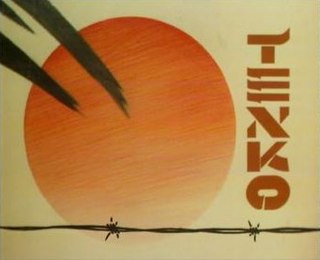
Tenko is a television drama series co-produced by the BBC and the Australian Broadcasting Corporation (ABC), which was broadcast between 1981 and 1985.
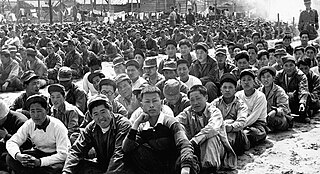
A prisoner-of-war camp is a site for the containment of enemy fighters captured by a belligerent power in time of war.
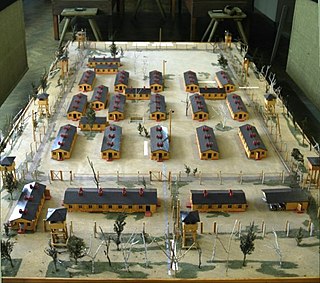
Stalag Luft III was a Luftwaffe-run prisoner-of-war (POW) camp during the Second World War, which held captured Western Allied air force personnel.
Anne Wheeler, OC, is a Canadian film and television writer, producer, and director. Graduating in Mathematics from the University of Alberta she was a computer programmer before traveling abroad. Her years of travels inspired her to become a storyteller and when she returned she joined a group of old friends to form a film collective. From 1975 to 1985 she worked for the NFB where she made her first feature film, A War Story (1981), which was about her father, Ben Wheeler and his time as a doctor in a P.O.W. camp during World War II. The war is a common theme in her work and she revisited it later in her films Bye Bye Blues (1989) and The War Between Us (1995). Her first non-NFB film was Loyalties in 1986.

A hell ship is a ship with extremely inhumane living conditions or with a reputation for cruelty among the crew. It now generally refers to the ships used by the Imperial Japanese Navy and Imperial Japanese Army to transport Allied prisoners of war (POWs) and romushas out of the Dutch East Indies, the Philippines, Hong Kong and Singapore in World War II. These POWs were taken to the Japanese Islands, Formosa, Manchukuo, Korea, the Moluccas, Sumatra, Burma, or Siam to be used as forced labor.

The Bridge over the River Kwai is a novel by the French novelist Pierre Boulle, published in French in 1952 and English translation by Xan Fielding in 1954. The story is fictional but uses the construction of the Burma Railway, in 1942–1943, as its historical setting, and is partly based on Pierre Boulle's own life experience working in Malaysia rubber plantations and later working for allied forces in Singapore and Indochina during World War II. The novel deals with the plight of World War II British prisoners of war forced by the Imperial Japanese Army to build a bridge for the "Death Railway", so named because of the large number of prisoners and conscripts who died during its construction. The novel won France's Prix Sainte-Beuve in 1952.

Jack Edwards, OBE was a British World War II army sergeant and a POW, most well known for his dedicated efforts of tracking down Japanese war criminals and his determination displayed in defending the rights of Hong Kong war veterans.

Jinguashi is a town in Ruifang District, New Taipei City, Taiwan, notable for its historic gold and copper mines. It was also known as Kinkaseki in Japanese and was under Taihoku Prefecture during Japanese rule.

Batu Lintang camp at Kuching, Sarawak on the island of Borneo was a Japanese internment camp during the Second World War. It was unusual in that it housed both Allied prisoners of war (POWs) and civilian internees. The camp, which operated from March 1942 until the liberation of the camp in September 1945, was housed in buildings that were originally British Indian Army barracks. The original area was extended by the Japanese, until it covered about 50 acres. The camp population fluctuated, due to movement of prisoners between camps in Borneo, and as a result of the deaths of the prisoners. It had a maximum population of some 3,000 prisoners.

The Selarang Barracks incident, also known as the Barrack Square incident or the Selarang Square Squeeze, was a revolt of British and Australian prisoners-of-war (POWs) interned in a Japanese camp in Changi, Singapore.
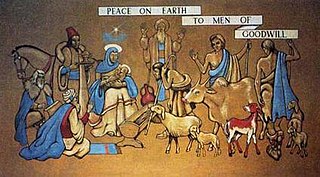
The Changi Murals are a set of five paintings of biblical theme painted by Stanley Warren, a British bombardier and prisoner-of-war (POW) interned at the Changi Prison, during the Japanese occupation of Singapore in World War II (WWII). His murals were completed under difficult conditions of sickness, limited materials and hardships. With a message of universal love and forgiveness, they helped to uplift the spirits of the POWs and sick when they sought refuge in the prison chapel.
Habib ur Rahman (1913–1978) was an Indian nationalist during British colonial rule of India, and an officer in the Indian National Army (INA) who was charged with "waging war against His Majesty the King Emperor". He served as Subhas Chandra Bose's chief of staff in Singapore, and accompanied Bose on his last fatal flight from Taipei to Tokyo, sharing the last moments of his life. Rahman also played an important role in the First Kashmir War. Convinced that Maharaja Hari Singh was out to exterminate the Muslims of Jammu and Kashmir, he joined Major General Zaman Kiani, in launching a rebellion against the Maharaja from Gujrat in Pakistani Punjab. Rehman and his volunteer force launched an attack on the Bhimber town. But, the records of the 11th Cavalry of the Pakistan Army indicate that their efforts did not succeed, and eventually the Cavalry was responsible for conquering Bhimber.
A War Story is a 1981 Canadian docudrama produced, written, and directed by Anne Wheeler. It tells the story of her father Major Ben Wheeler when he was captured by the Japanese during the Second World War.
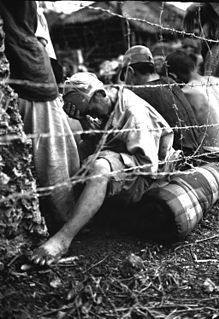
During World War II, it has been estimated that between 19,500 and 50,000 members of the Imperial Japanese military were captured alive or surrendered to Western Allied combatants, prior to the end of the Pacific War in August 1945. Soviet troops seized and imprisoned more than half a million Japanese troops and civilians in China and other places. The number of Japanese soldiers, sailors, marines, and airmen who surrendered was limited by the Japanese military indoctrinating its personnel to fight to the death, Allied combat personnel often being unwilling to take prisoners, and many Japanese soldiers believing that those who surrendered would be killed by their captors.
SS Rakuyo Maru (楽洋丸) was a passenger cargo ship built in 1921 by the Mitsubishi Shipbuilding & Engineering Company, Nagasaki for Nippon Yusen Kisen Kaisha.

Major General Sir Frederick Gallagher Galleghan, was a senior officer in the Australian Army who served in the First and Second World Wars.